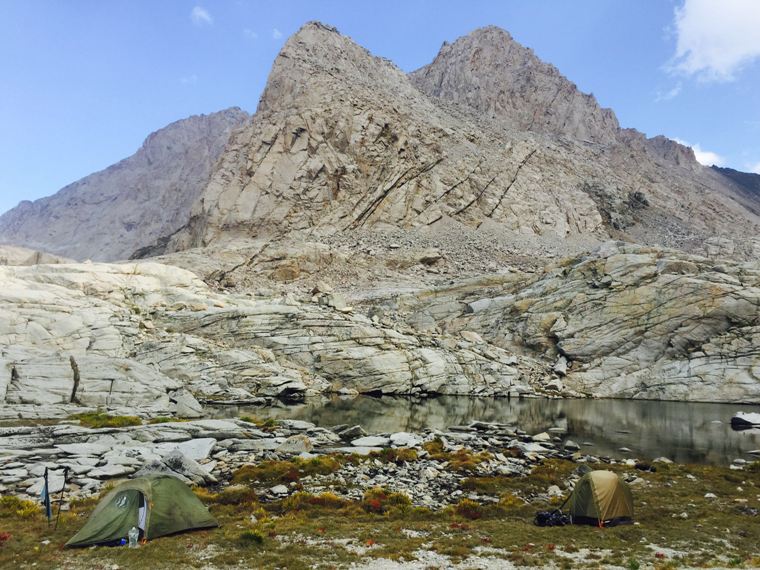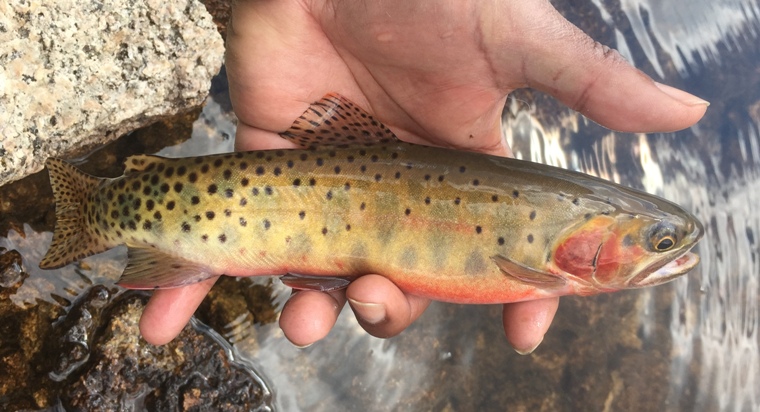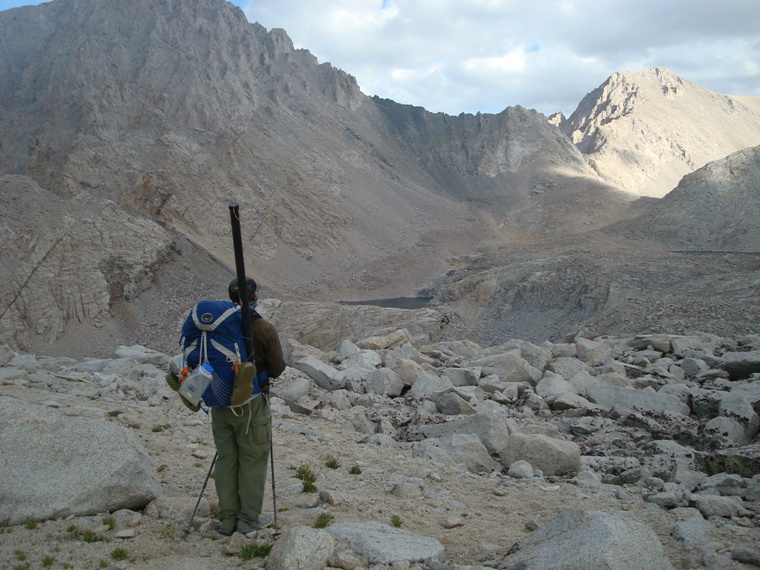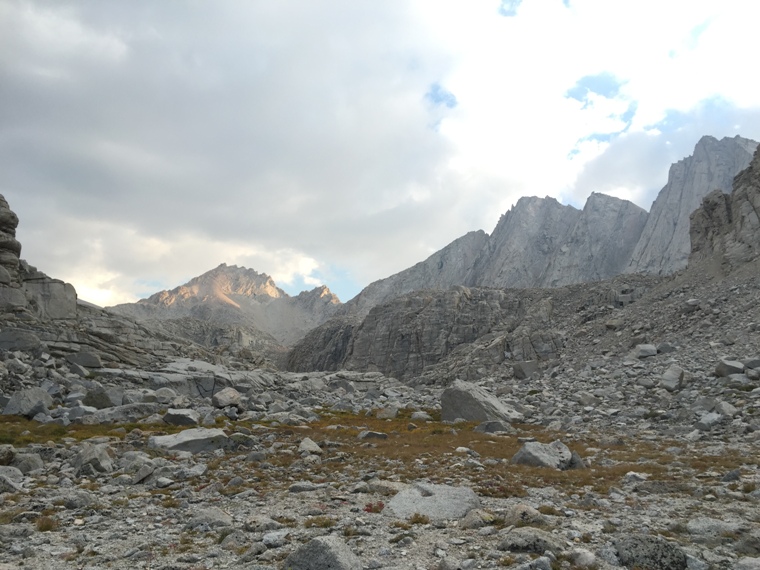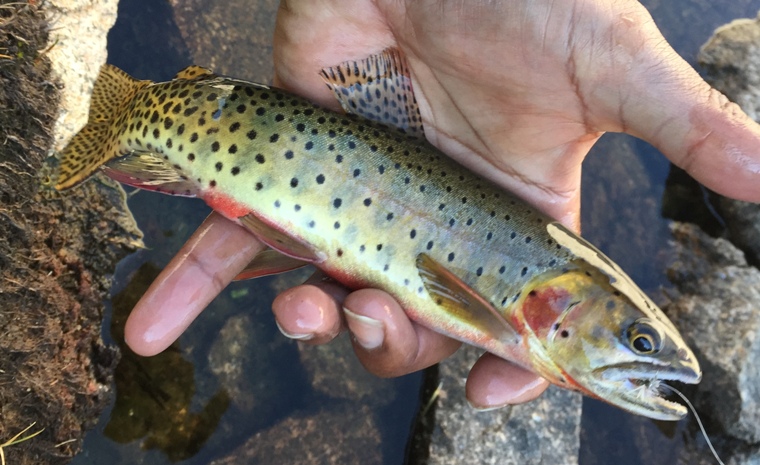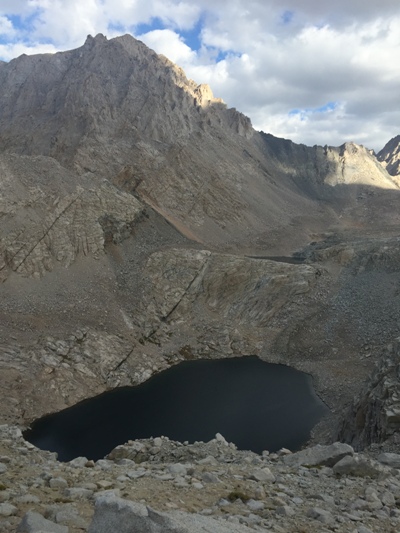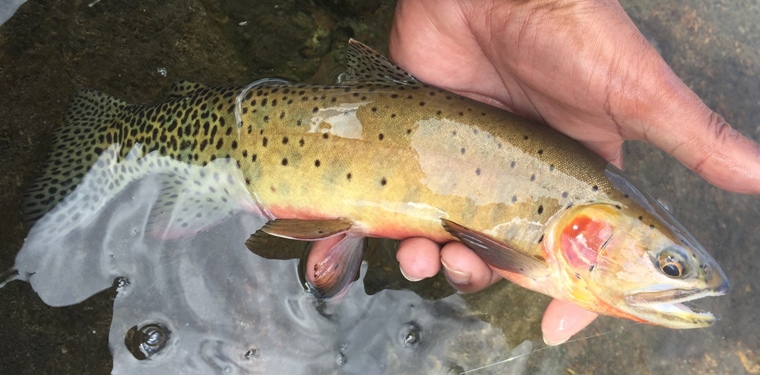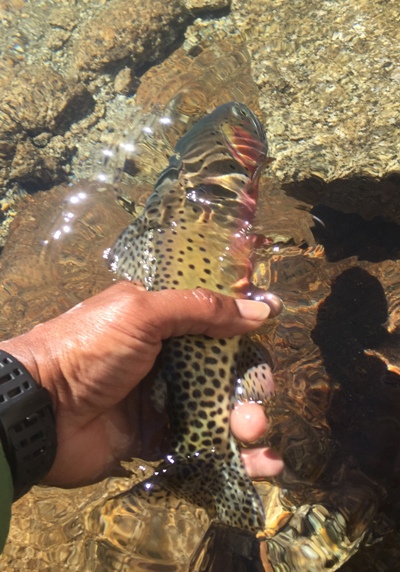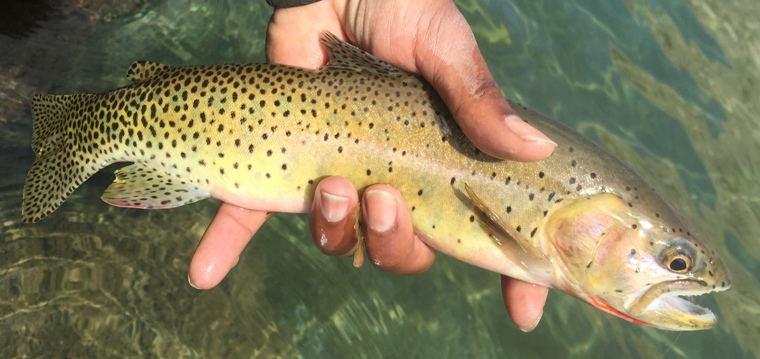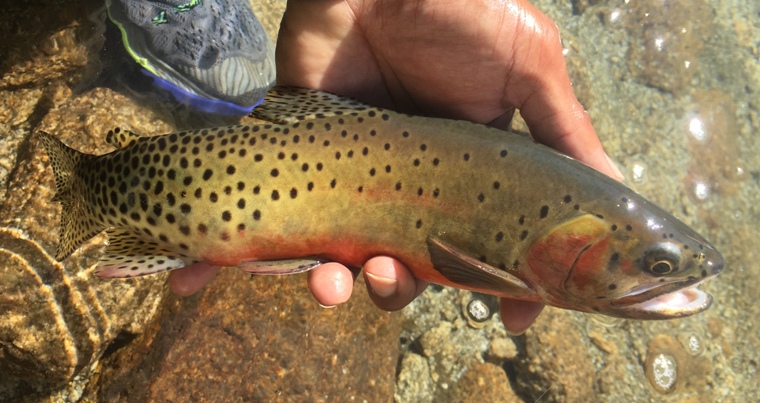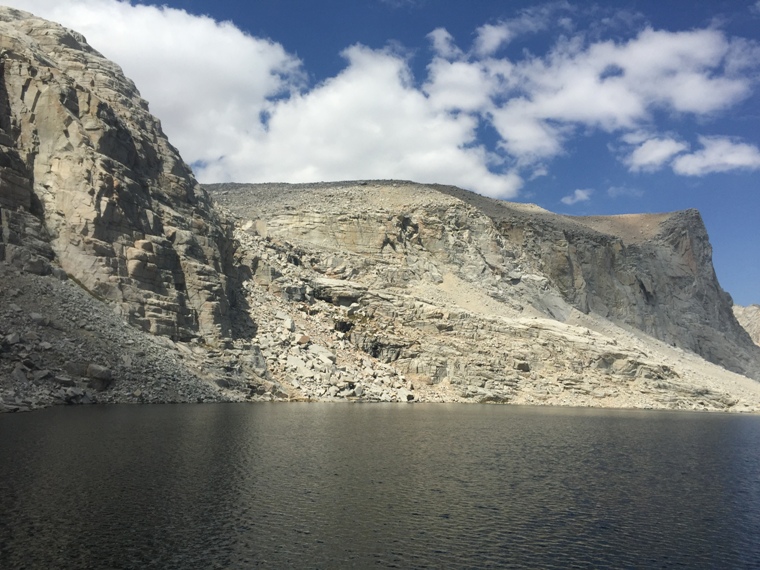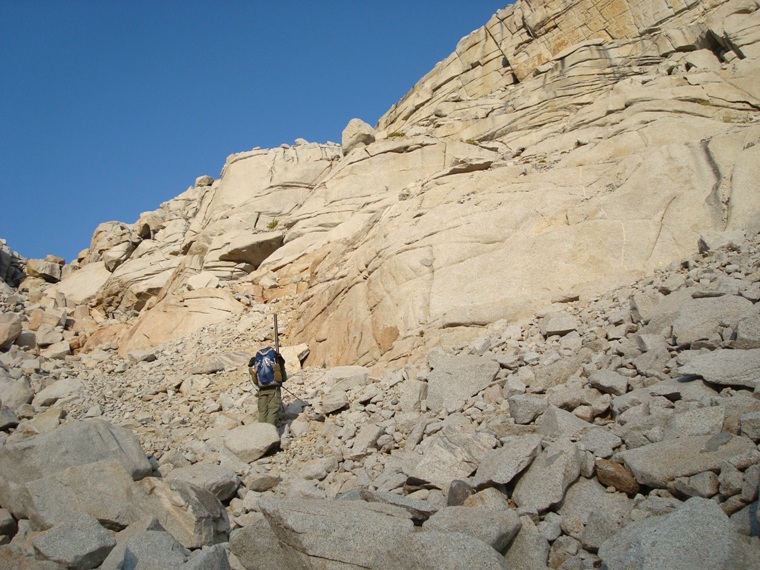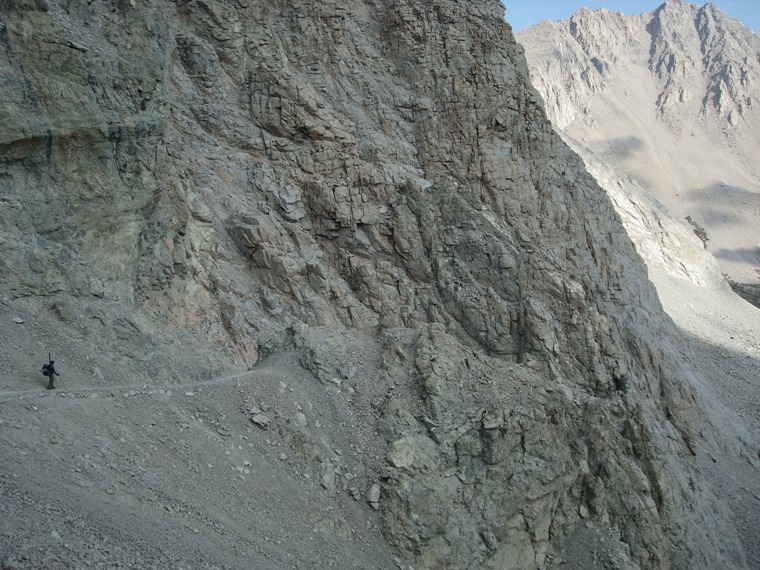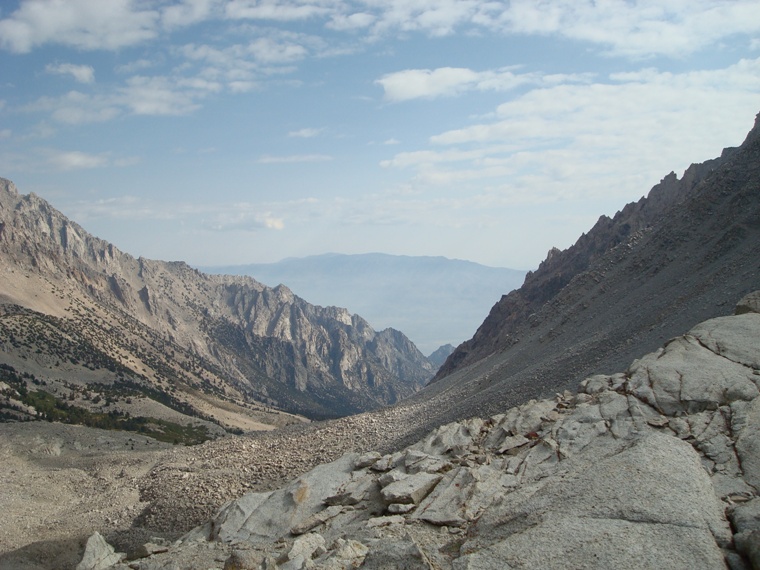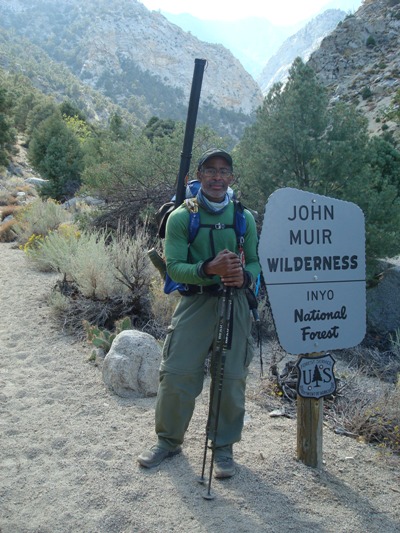|
|
|
|
|
Sept 7-9, 2015 Colorado River / Greenback Cutts Time: Narrative:
In the shadow of Mt Whitney, at the base of one of the highest peaks in the Sierra, lay a well-kept secret. A stash of pure strain Colorado Cutthroat trout. I say stash because, that’s exactly what they are. An emergency supply of self-sustaining fish, living outside of their native habitat. They’re sleepers of sort, waiting for the time that they become extinct or hybridized beyond recognition in their native Rockies, so that they can return and reclaim the waters that are their birthright. I first learned of these fish shortly after reading the book Colorado Greenback Cutthroat Trout by Jim Rubingh and Richard Fritz. It is an excellent read. The book lays out history and biology of the species as well as waters to fish. It goes into a detailed discussion of the genetic differences or lack thereof between the Colorado River Cutthroat and the Colorado Greenback Cutthroat; and, as of the publication of the book, the distinction was blurred. Regardless, I was enthralled with the idea of catching these fish in their native waters. When I learned that a population of these fish had been planted in the Sierra in the 1930’s, I knew I had to go.
In the past, some permitting issues severely restricted access to these waters but when the restrictions were lifted and became better suited to our schedules, Roger and I discussed going. Fast forward several years of talking but not actually putting something on the calendar and this year seemed like the year. Three weeks out, things got more serious. I sent Roger a note to confirm that he was still up for the trip. He was. I started doing research. There are 6 lakes in the basin, only 3 of which hold fish. We both remembered the trip report of a fellow who went all the way into the lakes and fished the wrong lakes. We didn’t want to be that guy. I confirmed which lakes held fish, going as far as confirming which lake held the largest fish. We’d concentrate our efforts there.
I got the wilderness permit and sent Roger another note: “Got permit. You know its 6,000 feet of climbing over 11 miles, right?” The last time we’d hiked that much together was on the way into Bear Creek in 2012. It was 3,400 feet in 8 miles and we were both knackered at the end. I wasn’t too concerned with the distance. My two day trip into Emigrant Lake earlier in the year showed that I had decent backpacking fitness back in June. That trip was 12miles to about 3,500 feet followed by 2 miles of descent. I wasn’t confident that I had that kind of fitness now but I have a pretty good knack for pacing myself and as long as I did’t stop for long periods of time during the hike and kept fueled; I figured I’d be ok. (Stopping too long during hikes cools me down and causes my muscles to seize up.) Roger on the other hand had mentioned several times this year that he was out of shape. I wanted to give him a heads up. “No problem”, he said. He'd been working out every day recently and taking hikes with a weighted pack. His legs felt good. The trip was on. I rolled into the trailhead at about 5:30 on Tuesday morning. I was pleased that the drive down was relatively clear. The recent firestorms in the Sierra and Sierra foothills had severely lowered the air quality in and around Mammoth Lakes the day before. So much so that instead of hiking, I decided to take a rest day, fishing Hot Creek for about an hour and doing so with a my standard hiking buff over my face. On Sunday, during my Fastpack and Fish trip into Vogelsang, the smoke had come in late afternoon. On Monday, it had come in by mid-morning and was so bad that driving from Mammoth to Bishop I could barely see the outline of the mountains just off my shoulder. Fortunately, south of Bishop the air quality was better and Tuesday morning at the trailhead it looked like we’d have a decent hiking day.
The trail to the lakes starts in a valley following a brushy creek for about two miles before turning south and heading over the first of two saddles. Once over the second saddle, the trail meets another creek and then steadily climbs to a rocky pass at about 12,000 feet. Once over the pass, two miles of cross country travel take you to the rim of the basin. It’s a steep descent into the basin and the best route down wouldn’t have been apparent if not for some existing trail ducks marking the “trail”. This was one of those situations where planning doesn’t help much. I often say that “a map isn’t the terrain” and that was particularly true in this case. The map shows the steep walls surrounding the basin on all sides and gives one the impression that the best route to our chosen lake would have been to work our way between the two upper lakes and then around a third before heading to our destination lake. This may have worked but I’m doubtful. The terrain was rough with lots of fallen granite and steep drops. The “map route” would have no doubt taken us hours.
We chose the more direct route. You couldn’t see it from the top but there was a small diagonal shelf on our side of the basin which we were able to descend fairly easily. By fairly easily I mean, without rope. The way down was sketchy to be sure with lots of rock fall above and below, lots of loose talus and many shear drops. If either one of us had lost our footing that would have been the end of our trip and I would have been using my Spot Satellite Messenger for a quick emergency evac.
Once down, the challenge was finding a campsite. There were two obvious sites on the granite above the lake but that would have put us in the path of falling rock. There wasn’t any place in the basin where rock from the surrounding cliffs hadn’t fallen and landed. Eventually we settled on two spots close to the outlet creek that seemed to be about 15 feet beyond where most of the rocks had landed. It had been a 10 hour trip in and by the time we’d settled into camp, darkness was falling. We’d come all that way though and like any good high sierra fly fishers, we rigged up our rods and hit the small outflow pond at the head of the creek. Fish were feeding freely. No one knows what tomorrow may bring. This may have been our only chance to catch some Colorado Cutts. The fish in the small pond were tiny for the most part, about 5 inches on average. We’d have to wait until morning to find bigger fish.
It was clear that night. I woke about 3am to a beautiful star filled sky. The kind you only see in the Sierra. Roger and I fished the small pond a little that morning before turning our attention to the lake.
Roger hit the lake while I was milling about camp. Immediately, he waved me over. I took my time navigating around the jagged rocks between our camp and the main lake. When I arrived, he’d already caught and released an 8 or 9 inches fish. The largest we’d caught or seen up to that point. He worked the left side of the outlet and I right. I peered into the water and could see two or three fish. I cast my cripple caddis out and…… rejected. On the lower lake or pond, the fish were pretty quick to snatch up the caddis but with my first few casts here, they didn’t seem so enthusiastic. Since I could see a few fish swimming about, I decided to throw several different bugs at them to judge their reaction. They were obviously taking small midges in the water pretty freely. I’d seen what appeared to be several callibaetis spinners earlier, with a few small caddis showing as well. That’s a lot of bugs for such a barren moonscape. In the end I decided to stick with the cripple caddis. This is where Roger and my experiences differed somewhat. He fished an EC caddis, which is similar to my cripple caddis except that it’s tied slim, like a mayfly, and has the parachute tied under the wing instead of over it. My cripple caddis is tied chunky, like a caddis, with the parachute tied over the wing. We both caught fish but where I found that I had to cast the fly a couple of feet in front of cruising fish or present the fly dead in the water well ahead of any fish; Roger found that twitching his fly produced a savage reaction. I’m not sure if it was the differences in flies and how they sat in the water (I’ve got to imagine mine sits deeper, wing and all in the surface film and the EC caddis sits with the body in the film and wing above) or perhaps the fish responded differently on the different banks but twitching didn’t do much for me.
The outlet had an underwater ridge between it and the main lake and several submerged boulders. There were several fish visibly cruising the ridge and several more below the ridge out of site. I did well casting my fly out to the ridge and letting it sit. After I figured I had hammered the ridge long enough I moved up the bank. I found the fish somewhat spooky. Several times I spotted and approached fish with very little stealth and paid for it. Other times I’d spook fish with a poor false cast but most often, a well presented fly to a sighted fish produced a good result. The fish gave up a good fight but were pretty unforgiving. Prick them once with a hook and they were off that pattern. You either moved on or switched flies. In most cases I simply moved on.
The fishing was consistent as we both navigated our respective shorelines. My side was steep with lots of rockfall. The water off the bank dropped off almost immediately but fish were cruising along the bank. Even over the very deep water 20 feet from shore, fish could be seen cruising just a few feet under the surface. These fish were actively looking for food and often a single sighted fish would rise for one natural, then another and then another before sipping in my cripple caddis. Often times the fish struck quickly. I missed and gave a long distance release to several fish (one was probably the largest of the day of course). Most times though, simply pausing on the strike and letting the fish turn away did the trick. The fish didn’t come to hand easily and put up a terrific fight. The best fish of the day was about 12 inches and was caught on “Roger’s side of the lake.” We’d met and passed each other just after lunch. He was fishing faster than I was and so we met at about the 1/3 mark as I made my trek as opposed to the half way mark. We’d both caught plenty of fish in the 8 to 10 inches range with some fish probably reaching 11, maybe even 12 inches. We were both targeting bigger fish but to be honest, I’m such a poor judge of submerged fish size that I simply targeted the largest fish of whatever group of fish I happened to be watching at the time. If a lone fish looked to be 7 inches in the water, then I made the cast. The fish in the small cove on Roger’s side of the lake was such a fish. Where the southern bank met the eastern bank it formed a shallow flat in which only two fish seemed to be actively working. At first I thought my first false cast had spooked the near fish. It had but it served to only push that fish farther away from me rather than put it off its feeding. I stopped casting and watched the fish for a while. Making note of its cruising pattern. It turned and headed for the far shore. I watched and when it turned again and headed in my direction, I shot out a cast which landed about 15 feet directly ahead of it. I watched the fish slowly approach it, then disappear and then…. Fish on!
I released that fish and slowly made my way around the flat when another fish came into view. This fish was closer to shore so I went into stealth mode. I crouched down, waited for the fish to turn in my direction, so that I wouldn’t line it and this time placed the fly at about 11 o’clock, 18 inches off its nose. The reaction was immediate and another good fish came to hand. This would be last of such fish as it seemed that the fish on the more shallow shore ran a bit smaller. (At least for me.) Not by much, maybe an inch or two but enough that I limited my casting for the remainder of the day.
That afternoon while Roger rested in his tent, I did some scouting around camp. Climbing out of the basin was going to be difficult and I wanted to have a quick look at the initial routes before we attempted it the next morning. The tough part would be the middle section. I thought, “why get hung up at the bottom, inching our way out of camp.” The next morning we packed and headed out of camp about 7:30am. I predicted it would take us 2 hours to hike out, even though it had only taken me about 20 minutes to make the 400 foot drop into the basin and Roger slightly longer. Now back at home, my GPS watch tells me it took 20 minutes to get in and 40 minutes to get out but if we hadn’t had my watch, we would swear it took close to an hour just getting in.
Our decent into the canyon was the equivalent of moving at a walking pace of 1 hour and 40 minutes per mile. It seemed to take a very long time. The way down was sketchy, with narrow ledges to navigate and loose falling rock. We had the advantage of being able to look down at our route and use gravity at times when the rocks around us started to side. At one point, Roger had to toss his pack down before down-climbing a section. On the way down, the route just appeared as required. We’d get to one obstacle and think “where do we go from here?” Once that obstacle was cleared; however, the next route simply seemed to appear in front of us. I suspected route finding on the way out would be more difficult. My scouting came in handy and we made quickly made our way to “the wall”. The section that I thought would give us the most trouble was the section at the base of the wall. It was loose talus and sand. We essentially slid down it on the way in. If we went back the way we came, we’d have to expend a lot of energy fighting the sand and rock, essentially running in place to make any headway and then traversing a section of larger rock and boulders that were equally loose. Not a great proposition. This had the very real danger of dislodging larger rocks above us.
Fortunately, we found an alternate route that took us over the submerged creek, before doubling back and leading us up a more secure route to the base of the cliff. Once there it was a simple matter of climbing up onto the wall itself. It took quite a bit of scrambling but wasn’t nearly as bad as it first appeared save for one section where we had to ditch our packs. We’d come to a ledge between 5 and 5 ½ feet high. We both remembered this ledge well. It was a pain to climb down. On the way down Roger had ditched his pack to climb down and I did sort of a slide, hop and hope my momentum didn’t carry me over the edge of the next ledge sort of thing. There were no cracks nor foot holds to help us up the ledge and no real hand holds except the ledge itself. We poked around for a minute, trying to figure out something. It seemed like it might be a real sticking point when I took my pack off. “Screw it”, I said as I lobbed my pack over the ledged, grabbed onto the edge and simply hopped over easy as you please. (The practical application of all those muscles ups I’ve written about in my gym routine.) It happened so quickly and without thought that Roger stood there giving me one of those “how the heck did you just do that looks,” before attempting the same himself.
From there it was surprisingly smooth sailing back to the edge of the wall and back up to the top of the rim. It would be mostly downhill back to the car from there. Of course we still had two saddles to climb up and over but nothing compared to the 6,000 feet climb it took to get in nor the steep scrambling it took to get out.
Previous John Muir Wilderness Chronicle Next John Muir Wilderness Chronicle
|

